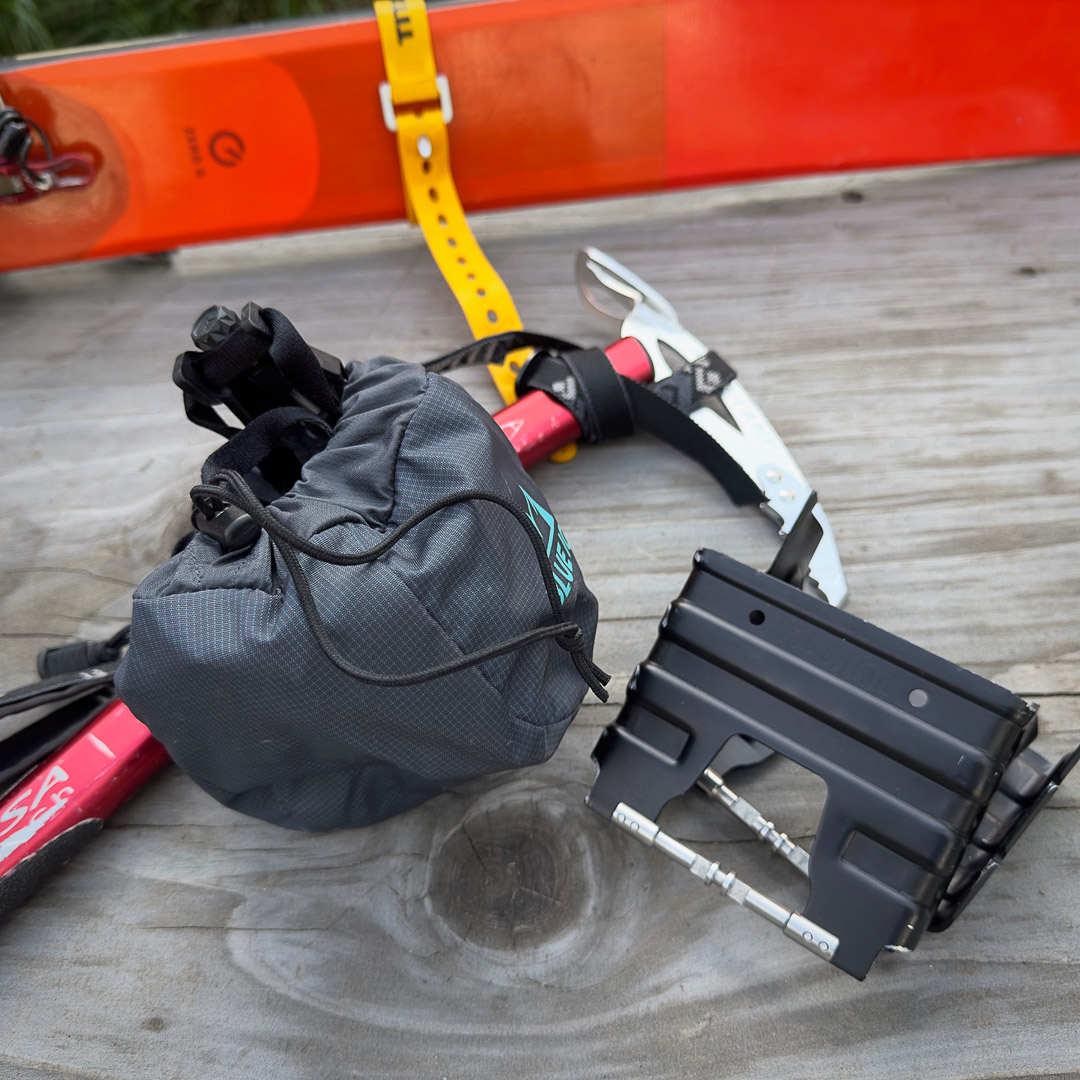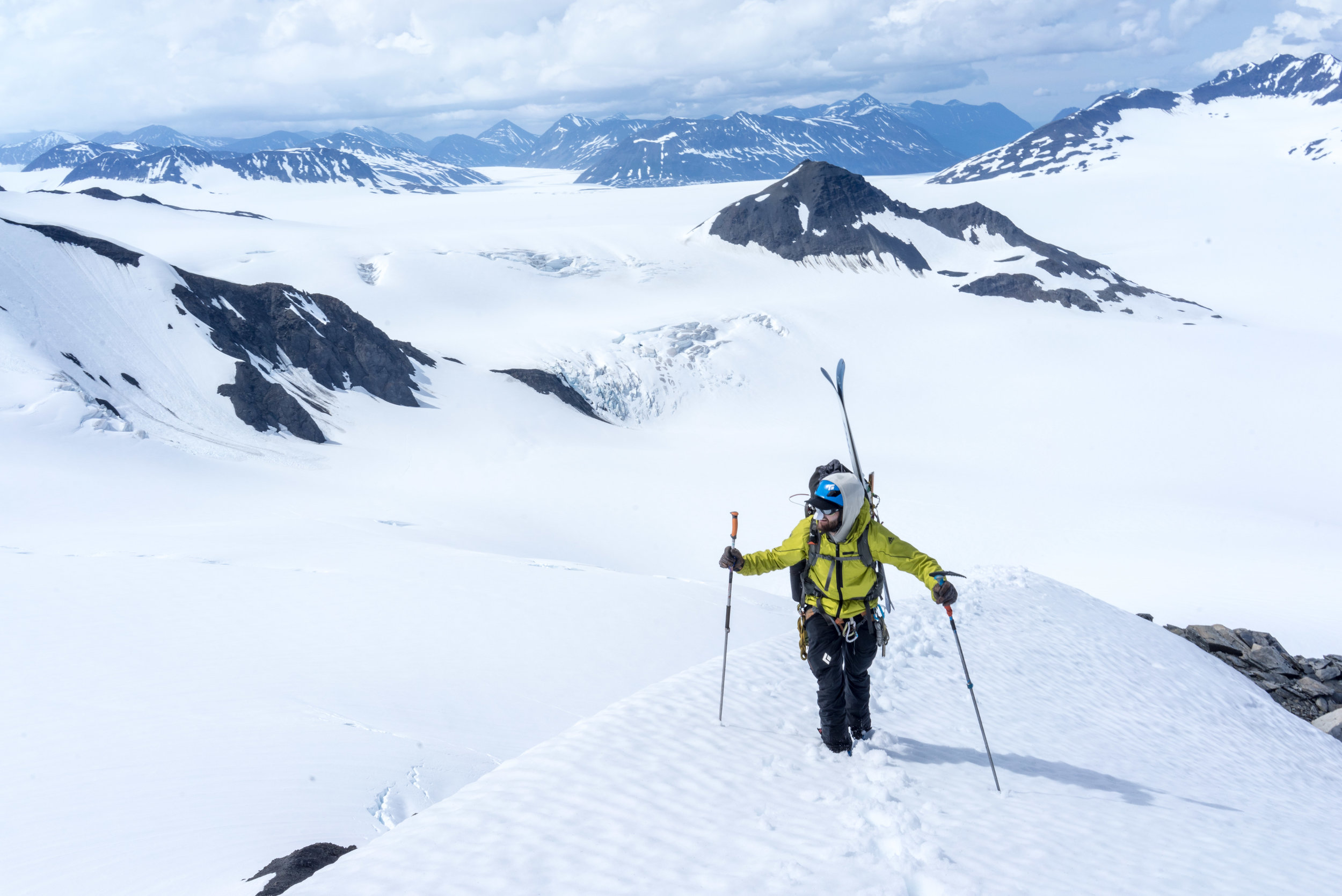Keep things in perspective. For a six-day ski traverse, it’s not uncommon to get away with a 35-40 pound pack. As the seasons trend from colder to warmer, the goal is to cut pack weight for daylong spring tours. Using the 35-40 pound pack as a heavyweight benchmark, it’s not unreasonable to pare the spring pack down to a reasonable, maybe aspirational, 12-17 pounds. You’ll still carry safety essentials within that spring pack weight range while cutting weight elsewhere. Remember, too, that when packing for spring, you are likely taking full advantage of the lengthy daylight and the ability to cover large distances with considerable vert. In other words, get an early start to move efficiently across locked-up and firm snow and milk those daylight hours while still traveling light.
The Pack
The idea is to keep the pack’s volume at or below 30L. The truth is many ski-specific packs meet these criteria. Ensure the pack is comfortable, has quick access to water (spring is typically warmer than winter), and carries skis well, as you’ll likely be cramponing some steeper sections and carrying skis on your back.
Additionally, in spring, as temps warm, access to on-the-fly water is essential if you and your partners want to keep on the move.
Safety Gear
Non-negotiable: Shovel, Beacon (worn), Probe
Negotiable: In some instances, we forgo radios. This is usually the case when skiing the PNW volcanoes in spring; the slopes are often above treeline, where the line of sight on each skier is easier.







Leave a Reply
You must be logged in to post a comment.